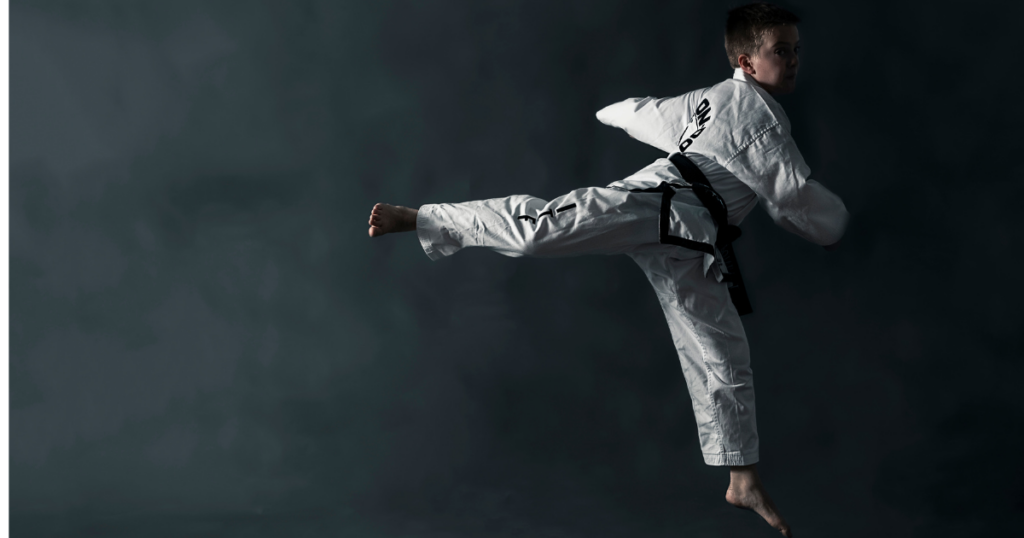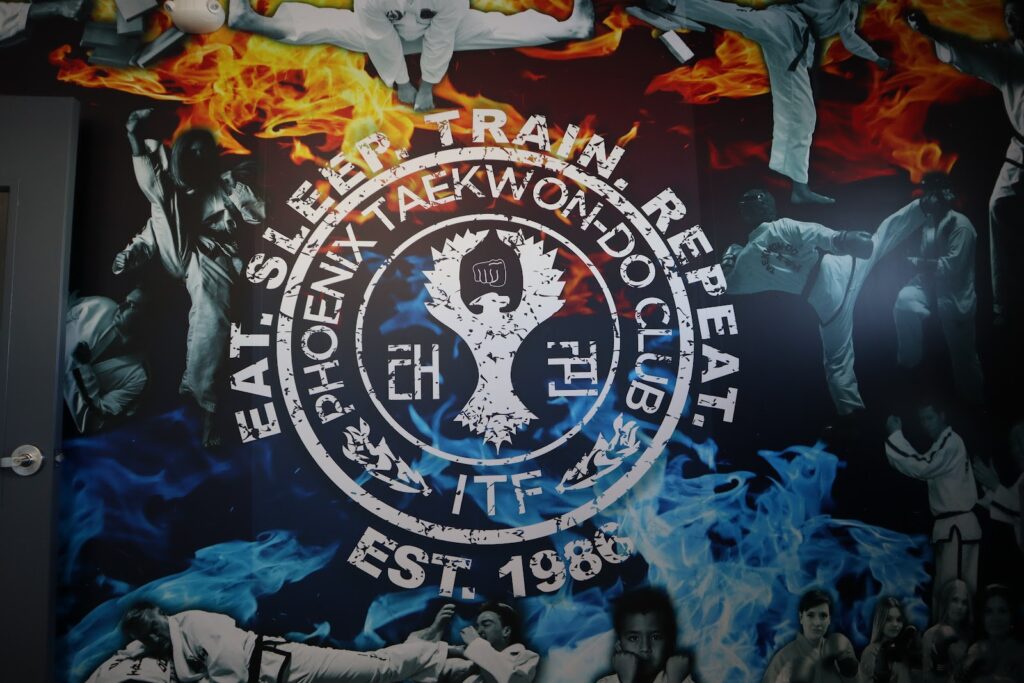Introduction
Physical development plays a crucial role in a child’s growth, affecting their ability to perform everyday activities, participate in sports, and develop self-confidence. Balance, flexibility, and coordination are three essential components of physical fitness that influence a child’s agility, posture, and overall movement.
Taekwon-do is one of the best activities for enhancing these fundamental skills, as it incorporates dynamic movements, precise techniques, and structured training that challenge and strengthen a child’s body. At Phoenix Martial Arts Club, we have seen firsthand how Taekwon-do training helps children develop stronger, more controlled movements, improving their performance in sports, school activities, and daily life.
In this article, we will explore how Taekwon-do improves balance, flexibility, and coordination in kids, and why these skills are essential for their overall development.
1. The Importance of Balance, Flexibility, and Coordination in Child Development
Why Balance Matters
Balance is the ability to maintain body control while standing, moving, or changing positions. It helps children:
- Develop good posture and core stability.
- Prevent falls and injuries.
- Improve agility in sports and everyday activities.
Why Flexibility is Essential
Flexibility refers to the range of motion in muscles and joints. Good flexibility allows children to:
- Perform movements more easily and efficiently.
- Prevent muscle strain and injuries.
- Improve athletic performance in various activities.
The Role of Coordination in Movement
Coordination is the ability to synchronize body movements smoothly and efficiently. Developing coordination helps children:
- Improve hand-eye and foot-eye coordination.
- Enhance reaction time and reflexes.
- Perform complex motor tasks with greater ease and confidence.
Taekwon-do integrates balance, flexibility, and coordination training into every class, making it an excellent way for children to develop these skills in a structured and engaging environment.
2. How Taekwon-do Improves Balance
Developing Core Strength for Better Stability
Balance begins with a strong core, which supports posture, movement control, and body stability. Taekwon-do incorporates exercises that target the core muscles, such as:
- Kicking drills that require standing on one leg while executing precise movements.
- Stances that focus on weight distribution and alignment.
- Controlled transitions between movements that challenge the body’s stability.
Single-Leg Kicking and Stance Training
Taekwon-do teaches kids to:
- Stand on one leg while performing kicks, improving their balance and stability.
- Hold low stances that require core engagement and lower-body strength.
- Move between stances fluidly, maintaining body control at all times.
Real-Life Benefits of Balance Training
Children who develop strong balancing skills through Taekwon-do experience:
- Better performance in sports such as soccer, basketball, and gymnastics.
- Improved posture, reducing the risk of back and joint issues.
- Greater body control, preventing falls and accidents during play.
By consistently practicing balance-based movements, Taekwon-do students gain better body awareness and stability, which helps them in all physical activities.
3. How Taekwon-do Increases Flexibility
Dynamic Stretching in Every Class
Flexibility training is a core part of Taekwon-do, ensuring that students develop a full range of motion while reducing the risk of injuries. Each class includes:
- Warm-up stretching routines to loosen muscles before training.
- Dynamic leg swings and mobility drills to improve flexibility.
- Deep stretching exercises that focus on increasing joint range and muscle elasticity.
How Kicking Improves Flexibility
High kicks, spinning kicks, and combination kicks all require:
- Loose and limber muscles to achieve full leg extension.
- Strength in the hip flexors and hamstrings to support dynamic movement.
- Progressive flexibility training that helps children reach higher kick levels over time.
Benefits of Improved Flexibility in Kids
- Prevents injuries by reducing muscle tightness and stiffness.
- Enhances sports performance, making movements smoother and more powerful.
- Increases comfort and ease of movement, allowing kids to perform daily activities with greater efficiency.
Taekwon-do’s focus on flexibility not only helps children perform better in class but also benefits them in other physical activities and overall well-being.
4. How Taekwon-do Develops Coordination
Hand-Eye and Foot-Eye Coordination in Martial Arts
Taekwon-do requires students to synchronize movements between their upper and lower body, improving:
- Hand-eye coordination through blocking, striking, and reaction drills.
- Foot-eye coordination with kicks, footwork drills, and directional movement.
Drills That Enhance Coordination
- Combination Kicks and Punches – Children must link multiple techniques together, developing precise movement control.
- Pad Drills and Target Striking – Helps students refine their ability to aim, react, and hit moving targets with accuracy.
- Sparring Drills – Teaches children to time their movements and react quickly to an opponent’s actions.
Why Coordination is Important for Children
- Enhances motor skills, helping with writing, drawing, and playing instruments.
- Improves reaction time, benefiting performance in sports and daily activities.
- Develops better control over body movements, reducing clumsiness and improving overall agility.
Through repetitive training and progressive skill development, Taekwon-do students gain better control over their movements, improving their coordination in all areas of life.
5. The Long-Term Benefits of Taekwon-do Training
Better Performance in Sports and Activities
Many parents notice that children who practice Taekwon-do excel in other sports due to their:
- Stronger balance and control.
- Increased agility and quick reflexes.
- Improved endurance and muscle flexibility.
Greater Confidence in Physical Abilities
Children who develop balance, flexibility, and coordination through Taekwon-do feel:
- More capable and confident in their movement skills.
- Less hesitant to try new physical activities or sports.
- More comfortable in their bodies, reducing self-consciousness and boosting self-esteem.
Lower Risk of Injuries and Postural Problems
Taekwon-do training helps children build:
- A strong and stable core, reducing the risk of falls and injuries.
- Proper posture and spinal alignment, preventing back pain or joint issues.
- Healthy movement habits that carry into adulthood.
By starting Taekwon-do at an early age, children develop lifelong physical skills that contribute to better health, confidence, and athletic performance.
6. How Parents Can Support Their Child’s Physical Development
Parents can help reinforce the skills their child learns in Taekwon-do by:
Encouraging Regular Practice
- Supporting them in attending classes consistently.
- Helping them stretch at home to improve flexibility.
- Practicing basic kicks and stances together to build coordination.
Providing Opportunities for Active Play
- Encouraging activities like running, jumping, and climbing to complement their martial arts training.
- Engaging in games that challenge balance and reaction time, such as hopscotch or jumping rope.
Recognizing and Celebrating Progress
- Acknowledging improvements in balance, posture, or flexibility.
- Reinforcing their confidence and effort, not just their achievements.
By supporting their child’s training, parents help them gain the most from their Taekwon-do experience.
7. How to Get Your Child Started in Taekwon-do
If you want your child to improve their balance, flexibility, and coordination in a structured and engaging way, enrolling them in Taekwon-do is a great choice.
Steps to Enroll Your Child:
- Find a reputable Taekwon-do school with a focus on child development.
- Attend a trial class to see if the program is a good fit.
- Encourage consistency and reinforce positive habits at home.
At Phoenix Martial Arts Club, we offer programs designed to help children develop strength, coordination, and confidence in a safe, supportive environment.
To book a free trial class, visit phoenixmartialartsclub.ca today.
Conclusion
Taekwon-do helps children develop balance, flexibility, and coordination through structured training, dynamic drills, and progressive skill-building. These essential physical skills benefit children in sports, daily activities, and long-term health.
By practicing Taekwon-do, children gain better body control, improved posture, and increased confidence, helping them succeed in all areas of life.
Give your child the advantage of strong physical development—enroll them in Taekwon-do today.

